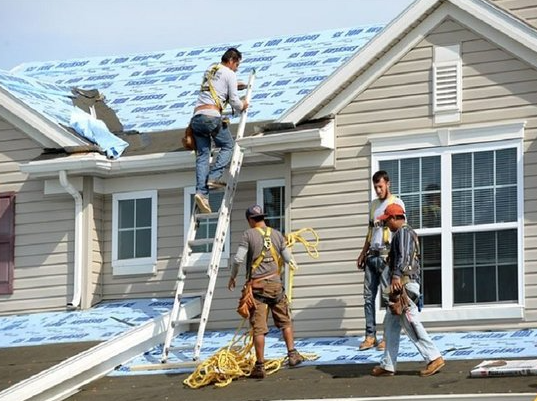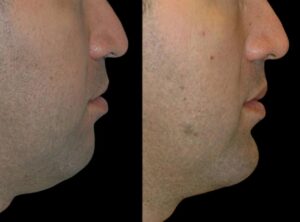
Best Roofing Materials for Extreme Weather Conditions
When it comes to protecting your home, your roof is your first line of defence—especially in areas prone to extreme weather. Whether you’re facing blistering heat, pounding rain, heavy snow, or hurricane-force winds, the right roofing material can make all the difference.
Choosing the best roofing material isn’t just about curb appeal—it’s about performance, longevity, and peace of mind. In this guide, we’ll walk you through the top roofing materials for extreme weather conditions, their pros and cons, and what you should consider before making a decision. As trusted experts in the field, All Aspects Roofing is here to help homeowners make smart, durable choices that stand the test of time.
Why Roofing Material Matters in Harsh Climates
Extreme weather conditions put roofs under serious stress. The wrong roofing material can lead to:
-
Leaks and water damage
-
Mold growth
-
Cracking or warping
-
Energy inefficiency
-
Shortened roof lifespan
A roof that’s not built to withstand your climate will cost more in the long run—both in repairs and replacement. That’s why it’s critical to select a material tailored to the conditions where you live.
1. Metal Roofing: Tough Against All Elements
Best for: High winds, hail, heavy snow, wildfires, and extreme heat
Why it works:
Metal roofs, whether aluminum, steel, copper, or zinc, are highly resistant to all types of extreme weather. They’re incredibly durable, can last up to 50 years or more, and offer excellent wind resistance—often rated for winds over 140 mph. They shed snow easily and are non-combustible, making them perfect for wildfire-prone areas.
Pros:
-
Lightweight and strong
-
Fire-resistant
-
Energy-efficient (reflects solar heat)
-
Low maintenance
-
Long-lasting
Cons:
-
Higher upfront cost
-
Can be noisy during rain or hail (can be reduced with insulation)
-
May dent from heavy hail if made from softer metals like aluminum
All Aspects Roofing Tip: We recommend standing seam metal roofing for superior protection in hurricane zones or wildfire areas.
2. Clay and Concrete Tiles: Excellent Heat and Wind Resistance
Best for: Hot, dry climates and areas with high winds
Why it works:
Clay and concrete tiles have been used for centuries in hot regions for good reason. These tiles are heavy and strong, offering great resistance against fire, wind, and sun. Concrete tiles are especially resistant to freeze-thaw cycles, making them a solid choice in fluctuating climates.
Pros:
-
Great insulation against heat
-
Resistant to rot and insect damage
-
Very durable (can last 50–100 years)
-
Classic, stylish appearance
Cons:
-
Heavy—may require extra roof reinforcement
-
Expensive to install and repair
-
Can be brittle and crack under impact (e.g., falling branches)
All Aspects Roofing Tip: Ask about reinforced concrete tile options if you’re in a storm-heavy or freeze-prone area.
3. Asphalt Shingles: Budget-Friendly and Weather-Resistant
Best for: Moderate climates with some storm or hail activity
Why it works:
Asphalt shingles are the most common roofing material in the U.S. because they offer a good balance of cost, durability, and ease of installation. High-quality architectural asphalt shingles can handle wind, moderate hail, and even snow when installed with proper underlayment.
Pros:
-
Cost-effective
-
Easy to install and replace
-
Good fire resistance
-
Available in various colors and styles
Cons:
-
Shorter lifespan (15–30 years)
-
Susceptible to wind uplift if not properly installed
-
Can crack in extreme cold
All Aspects Roofing Tip: Choose impact-resistant (Class 4) asphalt shingles for better hail protection and longevity.
4. Slate Roofing: Premium Durability for Snow and Rain
Best for: Cold, wet climates with heavy snow or rain
Why it works:
Slate is a natural stone material that’s extremely dense, waterproof, and long-lasting. It’s one of the best choices for areas with freezing temperatures, snow, and rain. Properly installed, a slate roof can last over a century.
Pros:
-
Excellent water resistance
-
Fireproof
-
Low maintenance
-
Unmatched lifespan (up to 100+ years)
Cons:
-
Very expensive
-
Heavy—needs a strong roof structure
-
Installation requires specialized skills
All Aspects Roofing Tip: Synthetic slate is a lighter, more affordable alternative that still offers great protection in harsh climates.
5. Synthetic Roofing Materials: Versatile and Impact-Resistant
Best for: Mixed or unpredictable weather conditions
Why it works:
Synthetic roofing materials (made from rubber, plastic, or polymer composites) are engineered to mimic traditional materials like wood shakes, slate, or tile—but with improved performance. They’re lightweight, flexible, and often rated for high impact and fire resistance.
Pros:
-
Weather-resistant
-
Lightweight
-
UV-resistant
-
Long warranties (up to 50 years)
-
Lower maintenance
Cons:
-
Varies widely in quality by brand
-
Newer technology—less proven long-term
All Aspects Roofing Tip: We only recommend trusted brands of synthetic roofing with Class 4 impact resistance and Class A fire ratings.
6. Wood Shingles and Shakes: Not Ideal for Extreme Weather
Best for: Mild, dry climates
While wood shingles and shakes look beautiful and offer natural insulation, they don’t perform well in extreme weather. They’re prone to mold, rot, and fire, and they require regular maintenance. For areas with frequent storms, snow, or wildfire risk, it’s best to avoid wood unless treated or reinforced.
All Aspects Roofing Tip: If you love the wood look, opt for a synthetic shake alternative for better durability.
What to Consider When Choosing a Roof for Harsh Weather
Here are some key factors to guide your decision:
1. Local Climate
Choose a material that aligns with your area’s dominant weather threats—whether it’s high winds, hail, snow, sun, or fire.
2. Roof Slope and Structure
Some materials, like tile or slate, are heavy and require strong structural support. Your roof’s slope will also affect how well it sheds snow or water.
3. Longevity vs. Budget
Think long-term. Higher initial costs may be offset by a longer lifespan and lower maintenance.
4. Insurance and Building Codes
Some roofing materials may qualify for insurance discounts or be required to meet local building codes in storm-prone zones.
5. Professional Installation
No matter the material, proper installation is critical. That’s why choosing a trusted contractor like All Aspects Roofing ensures your roof performs exactly as it should.
Why Choose All Aspects Roofing?
At All Aspects Roofing, we’ve helped countless homeowners across a wide range of climates select and install the perfect roofing systems for their needs. We understand how critical it is to protect your home from harsh elements—and we’re committed to delivering quality craftsmanship, honest advice, and durable solutions.
Whether you need a brand-new installation or a roof replacement built for resilience, we guide you every step of the way.
✅ Free consultations
✅ Certified and insured installers
✅ Top-rated weather-resistant materials
✅ Personalized recommendations for your region
✅ Emergency repairs and storm damage service
Final Thoughts
Your roof plays a major role in keeping your home safe and efficient. Choosing the best roofing material for extreme weather conditions will not only protect your investment—it will give you peace of mind.
There’s no one-size-fits-all answer. The right material depends on your climate, home structure, and long-term goals. But with expert guidance from All Aspects Roofing, you can feel confident you’re making a smart, future-proof choice.
FAQs
1. What is the most durable roofing material for all weather types?
Metal roofing is considered one of the most durable options for extreme weather, including high winds, hail, snow, and fire. It’s long-lasting, low maintenance, and works in a variety of climates.
2. Can I install a heavy roofing material like slate or tile on any home?
Not always. Slate and tile are heavy and may require structural reinforcement. It’s important to have a roofing contractor inspect your home before installing these materials. All Aspects Roofing can evaluate your roof’s capacity and provide safe recommendations.
3. What’s the best roofing option for homes in hurricane-prone areas?
Metal roofing and impact-resistant asphalt shingles are top choices. They’re both engineered to withstand strong winds and flying debris. We recommend consulting with All Aspects Roofing to choose hurricane-rated materials certified by UL or FM Global.





